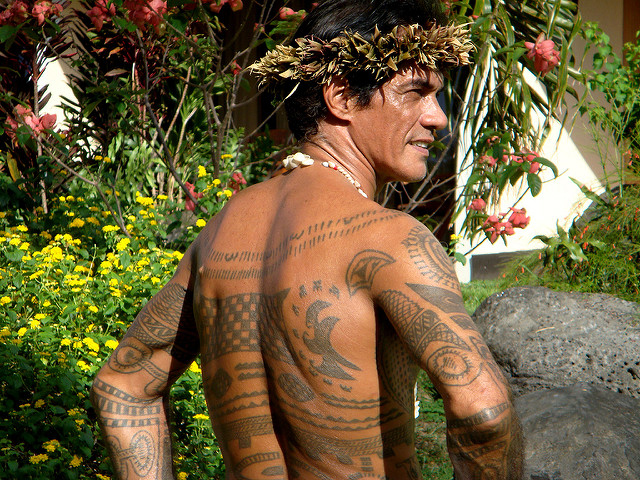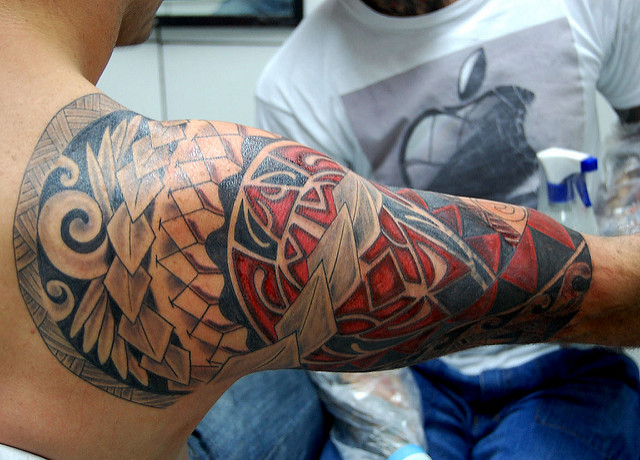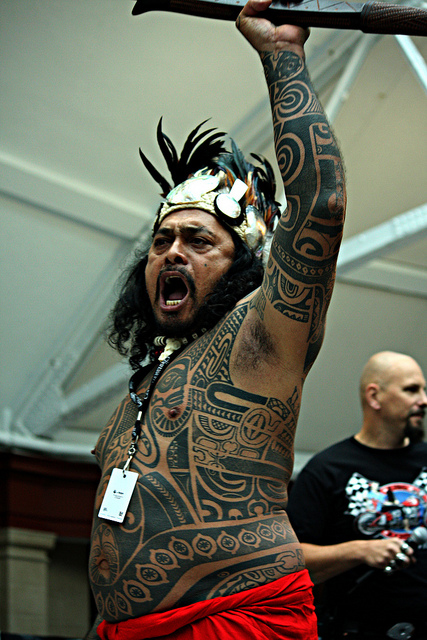The trailer for “Moana,” a current Disney film, depicts two main characters: the title heroine who is a Polynesian princess and a male demi-god hero, Maui, who is covered in tattoos. A review in The Guardian expresses cautiously positive sentiments about the latest movie for the pre-teen set, but an article in The Telegraph focuses on a more interesting question: why the tattoos?

The author of The Telegraph review, Oliver Pickup, wrote that the word “tattoo” comes from the Tahitian ta tau, which had many ritual and talismanic meanings in their traditional society. He makes it clear that tattooing originated in Polynesia, particularly in Tahiti, and it is still an important aspect of their culture.
Captain James Cook, the 18th century British explorer, introduced the word “tattoo” to Europe. He was intrigued by the way men and women in Polynesia ornamented themselves with spectacular designs. “The marks in general are spirals drawn with great nicety and even elegance,” Cook wrote. He added: “One side corresponds with the other. The marks on the body resemble foliage in old chased ornaments, convolutions of filigree work, but in these they have such a luxury of forms that of a hundred which at first appeared exactly the same, no two were formed alike on close examination.”

Traditionally, the process of having tattoos marked into the skin was a major ritual, a sign, for men at least, of their manhood. For men, tattoos served as talismans that warded off harmful spirits, as markers of sexual attractiveness, and as representations of fierceness. Women would also be tattooed, though not as extensively as men.
Tattoos had differing meanings in the various Polynesian societies, though some elements were common across the Pacific. Sharks’ teeth, which appear frequently in the tattoo designs in Polynesia, show power and ferocity, according to Mr. Pickup. On the other hand, another poplar motif is turtle shells, or the scutes on turtle shells, which symbolize fertility, wellness, longevity, and peace. The Marquesan Cross, a common element in many tattoos, represents harmony.

The origin of tattooing on Tahiti is described briefly by Levy (1973). He wrote that in their pre-Christian society, tattooing served as a rite of passage and one of a series of ceremonies that marked an individual’s changing social status. Disney was simply trying to show the high status of Maui by covering his heroic body with tattoos.
Levy went on to quote from the published diary of James Morrison, the sailor who was part of the mutiny on the Bounty but who stayed on Tahiti rather than proceed with Fletcher Christian and the other mutineers to Pitcairn Island. Morrison traveled about observing the customs of the Tahitians in the early 1790s. He described in detail the fact that withstanding the pain of the tattooing process without making a sound was an important way for the Tahitian man to show his bravery.
But Morrison added that the women he observed acted even more stoically toward pain. “The young females are more remarkable for bearing it than the males, though they cannot suffer more than one side to be done at a time, and the other may remain perhaps for twelve months after before it is finished…” (p.373 of Levy 1973). Princess Moana, at least in the Disney trailer, did not appear to have any tattoos and it is not clear from Levy or Morrison if that would have been accurate in mythic times. Perhaps she simply didn’t express a desire for them—she was already a princess, after all.